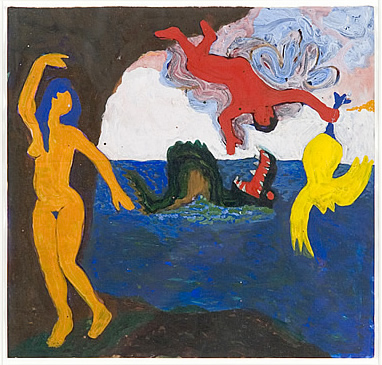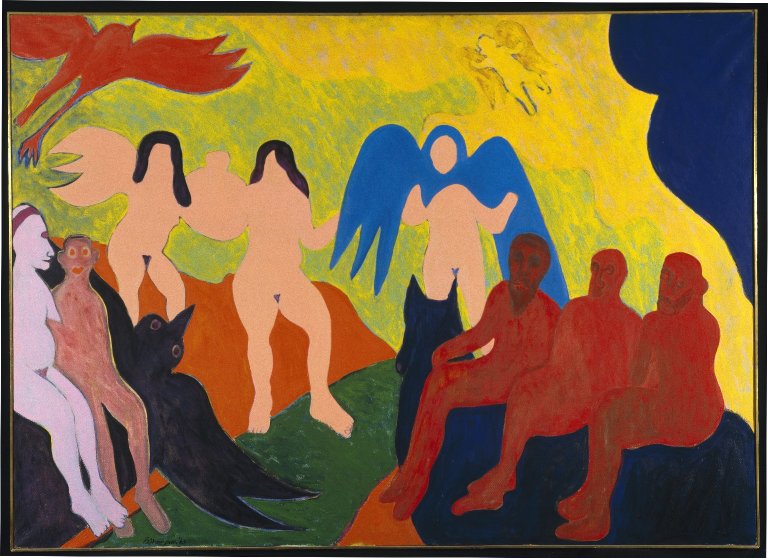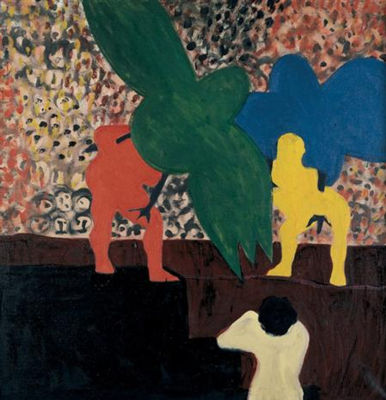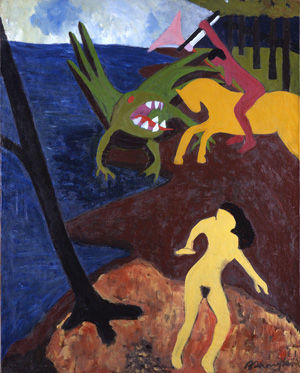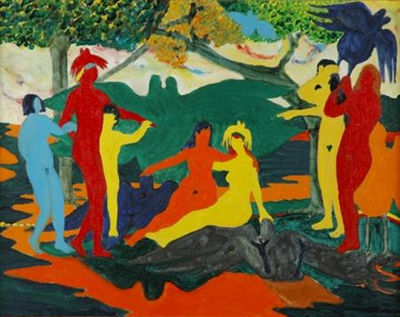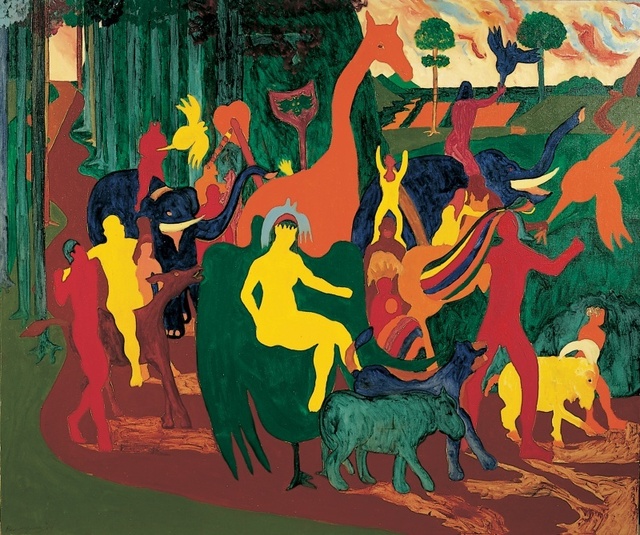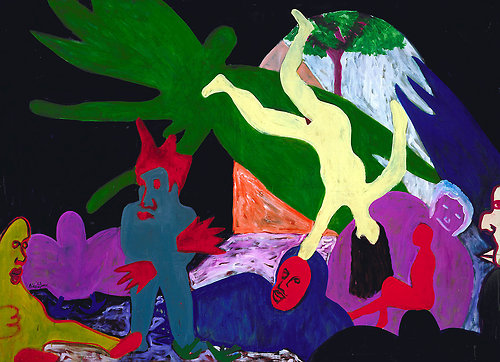<Back to Index>
- Painter Larry Rivers, 1923
- Painter Bob Thompson, 1937
PAGE SPONSOR
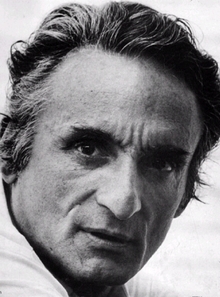
Larry Rivers (August 17, 1923 - August 14, 2002) was an American artist, musician, filmmaker and occasional actor. Rivers resided and maintained studios in New York City, Southampton, New York (on Long Island) and Zihuatanejo, Mexico.
Larry Rivers was born in the Bronx, New York as Yitzhok Loiza Grossberg to Russian Jewish parents. He changed his name to Larry Rivers in 1940, after being introduced as "Larry Rivers and the Mudcats" at a local New York City pub. From 1940 - 45 he worked as a jazz saxophonist in New York City, and he studied at the Juilliard School of Music in 1945 - 46, along with Miles Davis, with whom he remained friends until Davis's death in 1991.
Rivers is considered by many scholars to be the "Godfather" and "Grand Father" of Pop art, because he was one of the first artists to really merge non - objective, non - narrative art with narrative and objective abstraction.
Rivers took up painting in 1945 and studied at the Hans Hofmann School from 1947 – 48, and then at New York University. He was a pop artist of the New York School, reproducing everyday objects of American popular culture as art. He was one of eleven New York artists featured in the opening exhibition at the Terrain Gallery in 1955.
During the early 1960s Rivers lived in the Hotel Chelsea notable for its artistic residents like Bob Dylan, Janis Joplin, Leonard Cohen, Arthur C. Clarke, Dylan Thomas, Sid Vicious and multiple people associated with Andy Warhol's Factory. In 1965 he had his first comprehensive retrospective in five important American museums. His final work for the exhibition was The History of the Russian Revolution, which was later on extended permanent display at the Hirshhorn Museum and Sculpture Garden in Washington, DC. During 1967 he was in London collaborating with the American painter Howard Kanovitz.
In 1968, Rivers traveled to Africa for a second time with Pierre Dominique Gaisseau to finish their documentary, Africa and I, which was a part of the groundbreaking NBC series "Experiments in Television" during this trip they narrowly escaped execution as suspected mercenaries.
During the 1970s he worked closely with Diana Molinari and Michel Auder on many video tape projects, including the infamous Tits, and also worked in neon.
Established as one of America's most important postwar
artists, Rivers continued, until his death on 14 August
2002, to exhibit regularly both in the United States and
abroad and to create work that combined realistically
rendered images within a loosely brushed, quasi - abstract
background. His primary gallery being the Marlborough
Gallery in New York City. In 2002 a major retrospective of
Rivers' work was held at the Corcoran Gallery of Art in
Washington, D.C.
Rivers married Augusta Berger in 1945, and they had one son, Steven, as well as an earlier adopted child, Joseph. The couple divorced. He married Clarice Price in 1961, a Welsh school teacher who cared for his two sons. Rivers and Clarice Price had two daughters, Gwynne and Emma. After six years, they separated. Shortly after, he lived and collaborated with Diana Molinari, who featured in many of his works of the 1970s. After that Rivers lived with Sheila Lanham, a Baltimore poet. In the early 1980s, Rivers and East Village figurative painter Daria Deshuk lived together and in 1985 they had a son, Sam Deshuk Rivers. At the time of his death in 2002, Jeni Olin, a poet, was his companion.
Rivers also sustained a relationship with poet Frank O'Hara in the late 1950s and delivered the eulogy at O'Hara's funeral in 1966.
New York University bought correspondences and other
documents from the Larry
Rivers Foundation to house in their archive.
However, both daughters he had with Clarice Price, Gwynne
and Emma, object to one particular film being displayed,
as it depicts them naked as young children. The film's
purpose is supposedly to be a documentation on their
growth through puberty, but it was made without their
consent. This matter is addressed in the December, 2010
issue of the magazine Vanity Fair, and the October, 2010
issue of Grazia.
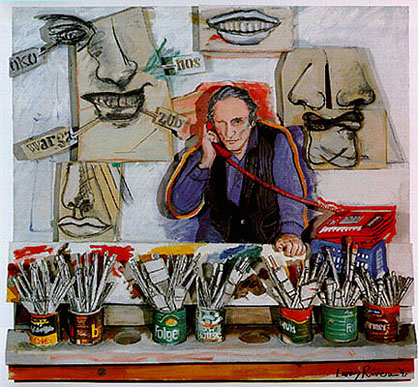
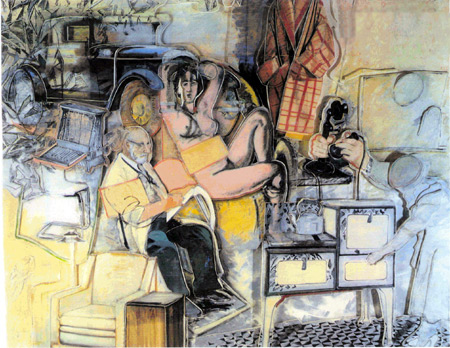
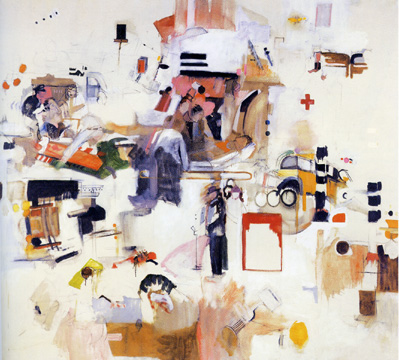
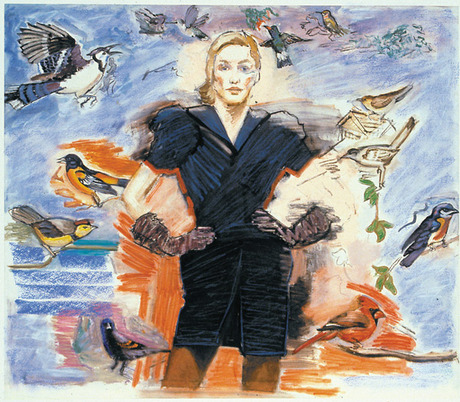
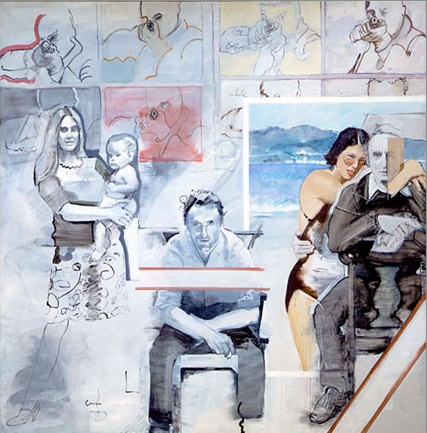
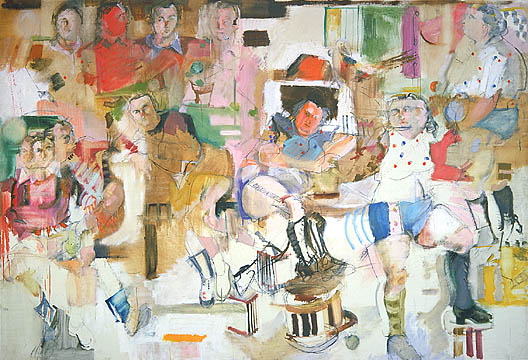
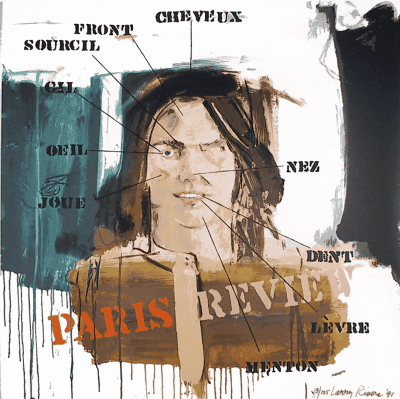

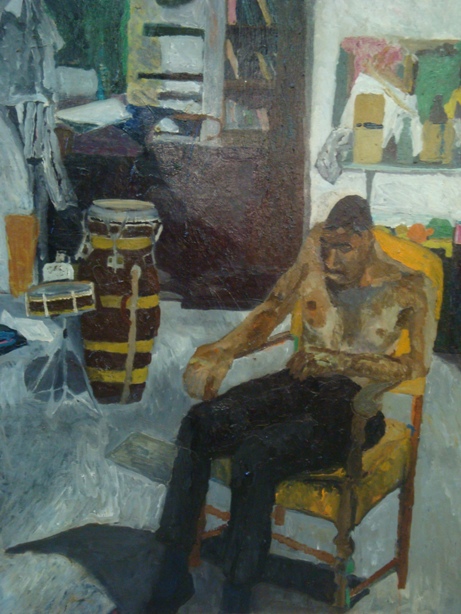
Bob Thompson (June 26, 1937 – May 30, 1966) was an African - American figurative painter known for his bold and colorful canvases, whose compositions were appropriated from the Old Masters. He was very prolific in his eight - year career, producing over 1000 works before his death in Rome, Italy, in 1966. The Whitney Museum in New York mounted a retrospective of his work in 1998. He also has works in numerous private and public collections throughout the United States.
Thompson was born and raised in Louisville, Kentucky. His father died in a car crash when he was 13, and he lived with relatives who exposed him to art and jazz.
He was briefly a pre-med student at Boston University (1955 – 56) but dropped out and returned to the University of Louisville (1957 – 58) where he studied painting under German expressionist Ulfert Wilke.
In 1958 he moved to New York City where he formed friendships with jazz musicians such as Charlie Haden and Ornette Coleman while a regular at the Jazz clubs The Five Spot and Slugs. He also formed friendships with writers Allen Ginsberg and LeRoi Jones in addition to fellow artists Lester Johnson, Red Grooms, Mimi Gross and Allan Kaprow, with whom he participated in some of the earliest Happenings. In 1960, he had his first solo exhibition at the Delancy Street Museum and later at the Martha Jackson Gallery where he had solo exhibitions in 1963-4, and 1965.
He married in 1960 and moved with his wife to Europe in
1961. They went to London, Paris (staying at the so-called
Beat Museum hotel) and to Spain, where they settled
on Ibiza. Thompson wanted to draw inspiration from the
European Old Masters and perhaps also wanted to escape
drugs. However, his heroin use took its toll. He died of
complications from gall bladder
surgery in Rome, Italy, in 1966.

